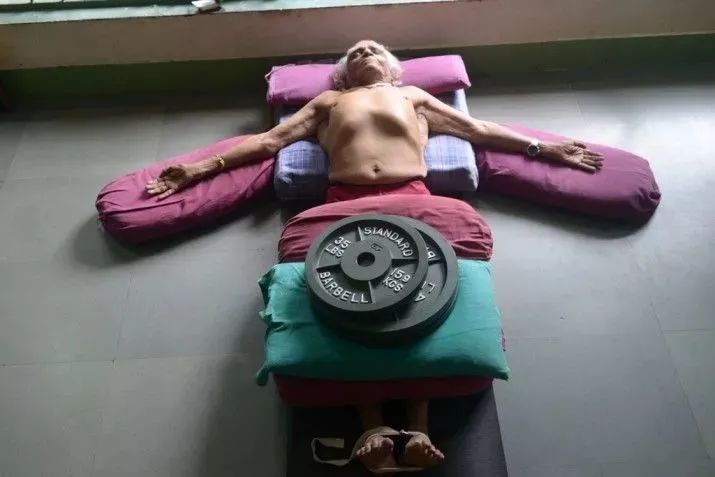Ayengar pioneered the invention of assistive tools, making yoga a practice that everyone can practice.

So why does Iyengar love using assistive devices so much? This can be traced back to 1965, when Master Iyengar found that he could not do the Toe Pose, he used assistive tools for the first time: to help the muscles stretch, he put a heavy stone on each thigh muscle.

“I found that assistive tools provide a certain height, weight or support to help people complete key movements and subtle body adjustments.” B.

Said Master K.S.

Iyengar.

This discovery has prompted Master Iyengar to create yoga aids to help practice and gain, and has benefited practitioners of Iyengar Yoga to this day.

When it comes to accessories, many people ignore the wall.

In fact, the wall is one of the best accessories for yoga practice.

Whether you are not flexible enough, or not strong enough, or not balanced well, you can practice against the wall.
We can rely on the wall to cultivate the feeling of the body and find the feeling of posture alignment, so as to build more confidence in yoga practice and make it easier to adhere to it.
1.
Cultivating your awareness depends on the wall, which can cultivate your awareness of the body and mind, such as Mountain Pose.
Mountain asana is the foundation of all yoga asanas.
The Mountain Pose against the wall can activate the body’s awareness, find the feeling of being upright, and achieve the effect of adjusting the body posture and stabilizing the mind.
2.
Stable and Deep Pose For a pose that needs balance, the wall can provide support and reaction force, so that you can live in the moment.
Like the practice of standing forward and bending against the wall, it can well correct the inertia of the body’s center of gravity and avoid the fear of falling.
For the inverted three-dimensional style, the role of the wall is more obvious – to find the right force point, strengthen the arms and elbows, and provide a sense of security and balance.
Use the wall.
Every time you practice, you will be more diligent.
3.
Intensive yoga practice can better exercise muscle groups that are difficult to stretch at ordinary times with the help of the reaction force of the wall.
For example, when you practice facing the wall in the sitting angle pose, you can use the strength of the wall to help your inner legs stretch more.
In addition to helping stretch, the beauty of the wall also includes opening the chest cavity, which can also become an assistant for gradually deepening the backbend.
For example, the following wheel type against the wall.
First practice leaning against the wall, then stand with your hands together.
After pushing the wall with both hands, keep the hips pushing forward.
Don’t rush down when lifting the chest.
When you straighten your arms first and then go down, the lumbar spine is easy to squeeze.
At this time, push the hips forward and extend the spine from the lumbar spine to continue to straighten the hands.
The hands finally come to the ground, push the ground hard, and then the chest to stick to the wall.
In addition to bending back, handstand is also the best posture to practice against the wall.
The following simple sequence is very suitable for beginners.
1.
Handstand sequence This sequence starts with a strong core, allowing you to practice handstand step by step, which is very suitable for beginners.
2.
The sequence of handstand and backbend In yoga, handstand and backbend are difficult yoga poses.
Handstand requires core strength to activate back muscles.
Wheels require flexibility of the spine and opening of the body.
When these two difficult poses are combined, the difficulty is even higher.
This sequence allows you to gradually open your body and enter the pose.
3.
When stretching is mentioned in the stretching sequence, many people may think of accessories such as foam axis and fascia ball.
In fact, just using the wall can also make the practice more in-depth.
4.
Family practice of leaning against the wall.
I believe everyone is familiar with the above poses, but have you tried to practice leaning against the wall? Maybe it will bring you a different experience! Finally, two sets of commonly used hip opening and shoulder opening sequences are attached.
This set of hip opening sequences is suitable for middle and high level practitioners to practice.
The traditional posture uses walls and yoga bricks to make stretching deeper.
In addition to using walls, yoga belts and yoga bricks, shoulder opening sequence is also an excellent accessory for shoulder opening…


